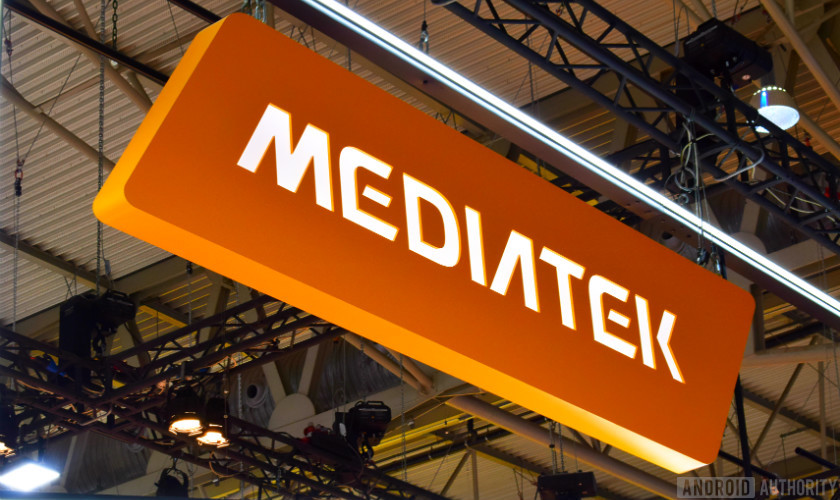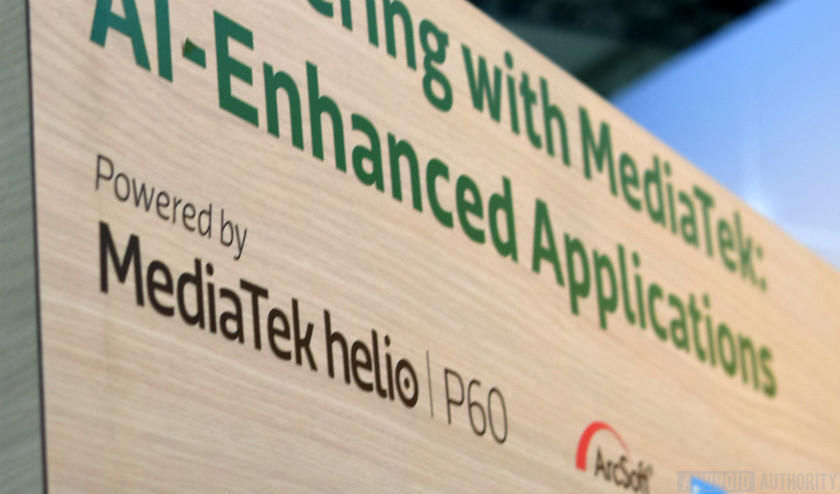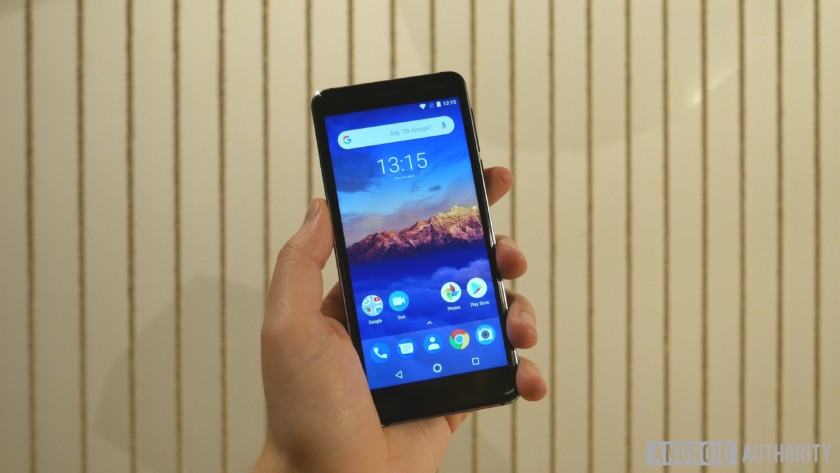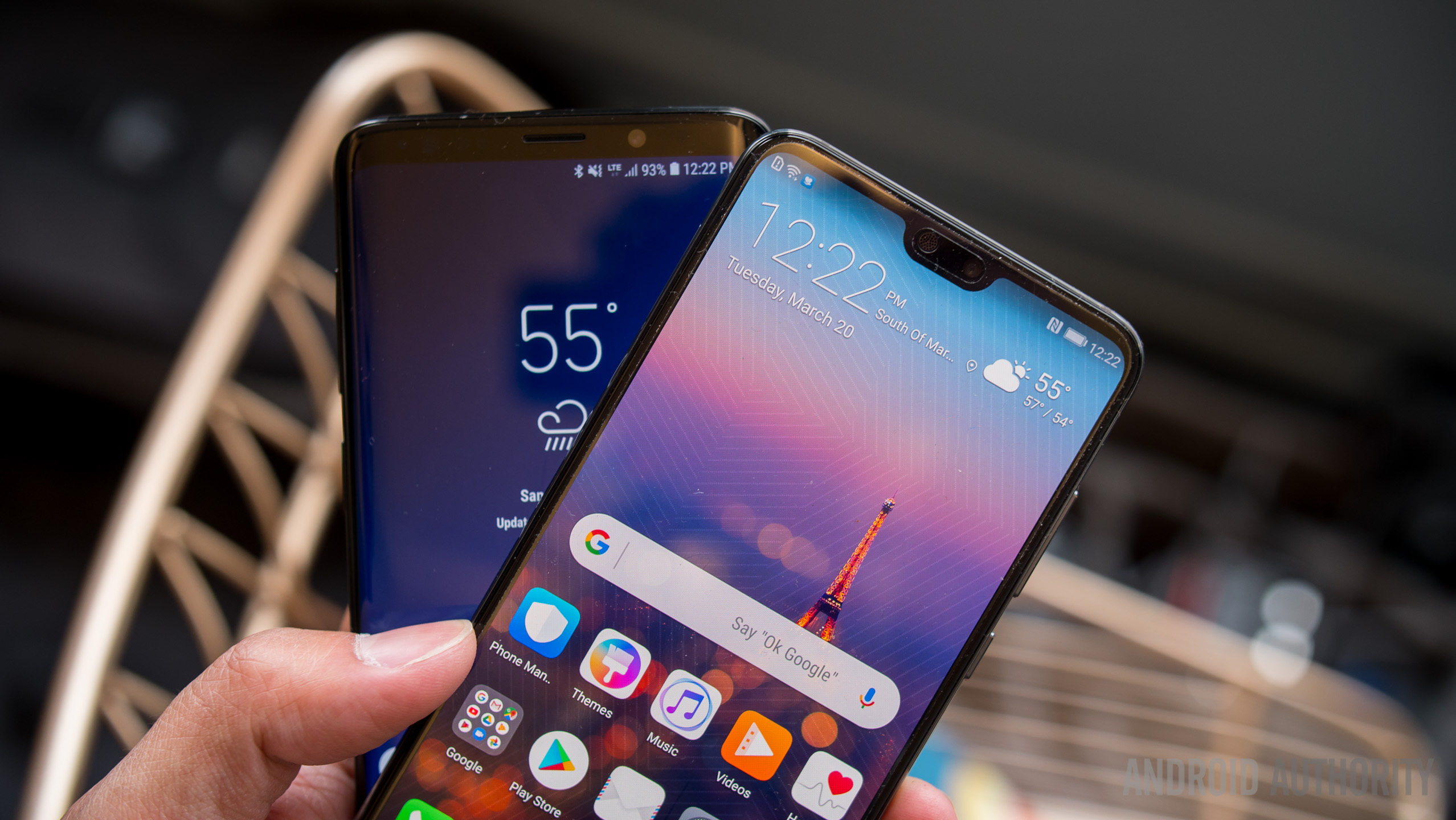Taiwan-based MediaTek takes a lot of flak for updates, but the company’s mobile chips are in scores of phones around the world. Figuring out the naming conventions and capabilities of these MediaTek processors though can be a little daunting, though.
Don’t fret! We’ve got a guide to recent MediaTek chips, detailing features, prominent phones, and much more.
MediaTek Helio series
MediaTek’s Helio family is generally its most prominent chipset range, ranging from the brand-new low-end Helio A series to the now-dormant Helio X-range of flagship chips. The most prominent sub-set of chips is the MediaTek Helio P-series, which occupies the lower mid-range to upper mid-range price brackets.
What happened to Helio X?
MediaTek is taking “a bit of a break” from its flagship X-series of processors. Last year’s Helio X30 didn’t do nearly as well as it expected, but it still stands out thanks to its decacore (ten cores) 10nm design, comprising eight lightweight Cortex-A53 cores (divided into two clusters) and a dual-core cluster of heavyweight Cortex-A73 cores.
The Meizu Pro 7 Plus is the only major phone to adopt the Helio X30, so chances are good you won’t see anything with it often. Otherwise, the company has seen a few more successful X-series MediaTek chips, such as 2016’s X25 and X20 processors. For now though, MediaTek is focusing on the Helio P family.
MediaTek Helio P60
MediaTek’s most powerful processor this year is the Helio P60, announced at MWC 2018. It stands out due to an integrated AI processing unit (APU), a feature usually reserved for flagship devices. This allows for faster and more accurate face and scene detection, better photo quality, and improved augmented reality.
The octacore MediaTek P60 also looks like a decent Snapdragon 660 rival too, owing to the four heavy-lifting Cortex-A73 cores and four power-sipping Cortex-A53 cores. In the graphics department, the Helio P60 uses the newest Mali G72 GPU, albeit in a three core arrangement. By comparison, the international Galaxy S9 uses the same GPU, but with 18 cores. More cores essentially equal much more graphical power in this case.
The Helio P60 is capable of 4K recording, supports tall full HD+ screens (2,160 x 1,080), up to 8GB of RAM, and Bluetooth 4.2. The P60 also supports up to 24MP and 16MP dual camera or a single 32MP camera.
P60 The clearly has some premium features (4K recording, AI chip) then, but you won’t be getting Bluetooth 5.0 and 1,440p screens here. It hasn’t seen the same level of adoption as the Snapdragon 660 thus far, but it’s a capable mid-range processor nonetheless.
A smartphone with the Helio P60 varies in price from ~$450 for the Oppo R15 (Oppo’s gonna Op) to just ~$132 for the Realme 1. Oppo is usually overpriced in my opinion, while Realme is Oppo’s new affordable Indian brand (think Huawei’s Honor brand). The real price of a Helio P60 is somewhere in the middle. Heck, the Oppo A3, which looks like the Chinese version of the Realme 1, costs ~$330.
Notable Helio P60 phones: Oppo R15, Oppo A3, Realme 1, Vivo X21i
MediaTek Helio P23, P25 and P30
The Helio P23 and P30 were two of Mediatek’s mid-range processors for 2017 (along with the earlier P25), announced in August.
Both of these MediaTek chips deliver an octacore Cortex-A53 layout clocked at over 2Ghz and a last-generation Mali G71 GPU (albeit with two cores). These chips are built on a 16nm process, which isn’t the smallest or most power-efficient process around, but they should still be more efficient than older chips like the Helio P10.
The Helio P23 and P30 support 2,160 x 1,080 screens and up to 6GB of RAM. The P30 has a few advantages over its P23 stablemate too, such as 4K recording, 16MP (on each lens) dual camera or 25MP single camera support (compared to 13MP and 13MP or 24MP), and a low-power sensor hub for fitness tracking and virtual assistants.
| Helio P30 | Helio P25 | Helio P23 | |
|---|---|---|---|
| CPU | Octacore Cortex-A53 2.3Ghz |
Octacore Cortex-A53 2.6Ghz |
Octacore Cortex-A53 2.3Ghz |
| GPU | Mali-G71 MP2 950Mhz |
Mali-T880 MP2 1Ghz |
Mali-G71 MP2 770Mhz |
| Camera | 25MP single, 13MP+13MP dual | 24MP single, 13MP+13MP dual |
24MP single, 13MP+13MP dual |
| Display | 2,160 x 1,080 | 1,920 x 1,080 | 2,160 x 1,080 |
| Network | Cat-7 downlink (301.5Mbps) Cat-13 uplink (102Mbps) |
Cat-6 (301.5Mbps downlink, 51Mbps uplink) |
Cat-7 downlink (301.5Mbps) Cat-13 uplink (102Mbps) Dual 4G SIM |
| Process | 16nm | 16nm | 16nm |
These MediaTek processors are similar on paper to the Snapdragon 625 and Snapdragon 450 (they all have lightweight octacore CPUs), although the Qualcomm chips are built on a smaller manufacturing process. In other words, you should expect better endurance in theory from the Snapdragon chips. Qualcomm chips traditionally excel at graphics too, so budget-conscious gamers need to take this into consideration.
The Helio P25, launched several months before the P23 and P30, is a similar processor. It still supports 4K recording and an octacore A53 CPU, but uses an older Mali T880 MP2 GPU and tops out at full HD (no full HD+ here).
Notable Helio P23, P25 and P30 phones: Gionee M7 (P30), Meizu Pro 7 (P25), Doogee Mix 2 (P25), Oppo F5 (P23), Vivo Y75 (P23).
MediaTek Helio P22 and A22

The Redmi 6 features a Helio P22 processor. MIUI Forum
The Helio P22 and quad-core Helio A22 are two of the newest MediaTek chips, announced just last month. As the name implies, the P22 is less capable on paper than the P23. Meanwhile, the Helio A22 is the first in the company’s A-series — ostensibly a rebrand of its quad-core chips. Nevertheless, both new MediaTek SoCs are built on a 12nm manufacturing process, so expect phones with these chips to deliver good endurance in theory.
The two processors share loads of features, such as support for 13MP+8MP dual/21MP single cameras, a maximum display resolution of 1,600 x 720, a low-power hub for assistants and fitness tracking, Bluetooth 5, and “light AI enhancements” (facial recognition and bokeh effects for instance).
| Helio P22 | Helio A22 | |
|---|---|---|
| CPU | Octacore Cortex-A53 2Ghz |
Quad-core Cortex-A53 2Ghz |
| GPU | PowerVR GE8320 650Mhz |
PowerVR GE-series |
| Camera | 21MP single, 13MP+8MP dual |
21MP single, 13MP+8MP dual |
| Display | 1,600 x 720 | 1,600 x 720 |
| Network | Cat-4 (150.8Mbps downlink, 51Mbps uplink) Dual 4G SIM |
Cat-4 (150.8Mbps downlink, 51Mbps uplink) Dual 4G SIM |
| Process | 16nm | 16nm |
The MediaTek Helio P22 differs from the A22 by offering an octacore 2Ghz Cortex-A53 CPU and a PowerVR GE8320 GPU aimed at low-cost devices. Meanwhile, the A22 halves the core-count and uses an unnamed PowerVR “GE-class” GPU.
MediaTek told us the P22 is “most comparable” to Qualcomm’s Snapdragon 450 chip. With the P22-toting Redmi 6 available for ~$124, it’s clear that the processor could bring a solid punch to $150-$200 devices.
Meanwhile, the A22 has found its way into the sub-$100 Redmi 6A, so expect entry-level devices to take a step up in capabilities and endurance.
Notable Helio P22 and A22 phones: Redmi 6 (P22), Vivo Y83 (P22), Redmi 6A (A22)
MediaTek’s MT series
MediaTek also has plenty of other processors in its catalog, using the underlying MTxxxx naming convention instead. The MT675x series is the most capable of the lot, offering octacore chips.
MediaTek’s MT673x range, meanwhile, halves the core count, landing in a ton of entry-level devices around the world. Let’s start with the octacore MediaTek SoCs.
MT675x
2016’s MT6750 is essentially the equivalent of the equally old but still capable Snapdragon 430. In fact, the two chips are pretty evenly matched in various benchmarks. The chipset and its variants appeared in scores of budget phones.
The MT6750 delivers an octacore Cortex-A53 CPU (four at 1.5Ghz, four at 1Ghz), an aging Mali T860 MP2 graphics, an old 28nm manufacturing process, and supports up to 4GB of RAM and 1,280 x 720 resolution. It’s not quite as impressive as the Snapdragon 430, which supports full HD screens, but compares pretty favorably nonetheless.
| MT6750 | MT6755S | MT6753 | MT6752 | |
|---|---|---|---|---|
| CPU | Octacore Cortex-A53 Four at 1Ghz, Four at 1.5Ghz |
Octacore Cortex-A53 2Ghz |
Octacore Cortex-A53 Four at 1.5Ghz, Four at 1.3Ghz |
Octacore Cortex-A53 1.7Ghz |
| GPU | Mali-T860 MP2 520Mhz |
Mali-T860 MP2 800Mhz |
Mali-T720 MP4 600Mhz |
Mali-T760 MP2 700Mhz |
| Cameras | 20MP single | 21MP single | 16MP single | 16MP single |
| Display | 1,280 x 720 | 2,160 x 1,080 | 1,920 x 1,080 | 1,920 x 1,080 |
| Network | Cat-6 (301.5Mbps downlink, 51Mbps uplink) | Cat-6 (301.5Mbps downlink, 51Mbps uplink) | Cat-4 (150.8Mbps downlink, 51Mbps uplink) | Cat-4 (150.8Mbps downlink, 51Mbps uplink) |
| Process | 28nm | 28nm | 28nm | 28nm |
The company also recently delivered the MT6755S (called the Helio P18 in some quarters), which offers a higher clocked CPU and GPU and full HD screen support. MediaTek also has two more MT675X variants: the MT6752 and MT6753. These offer different GPUs, full HD display support, and higher clocked cores too.
All in all, expect to find these MediaTek chips in sub-$200 phones and thereabouts. Don’t pay anything more than $250 for a phone with this processor, unless it has extra features like water-resistance, dual-camera support, or a huge battery.
Prominent MT675x series phones: LG K10 2017 (MT6750), LG X Power 2 (MT6750), Asus Zenfone 3S Max (MT6750), Nokia 3.1 (MT6750), Nokia 5.1 (MT6755S), Sony Xperia C5 Ultra (MT6752)
MT673x series
Moving even lower in our review of MediaTek processors, we have the MT673x series (MT6732, MT6735, and more) delivering processors for entry-level smartphones.
These all have quad-core Cortex-A53 CPUs, so they’ll handle web browsing, music playback, and communication apps just fine. Don’t expect fast loading times and super-snappy performance though, as they lack heavy-lifting CPU cores.
| MT6739 | MT6738 | MT6737T | |
|---|---|---|---|
| CPU | Quad-core Cortex-A53 1.5Ghz |
Quad-core Cortex-A53 1.5Ghz |
Quad-core Cortex-A53 1.5Ghz |
| GPU | PowerVR GE8100 570Mhz |
Mali-T860 MP2 350Mhz |
Mali-T720 MP2 600Mhz |
| Camera | 13MP single | 13MP single | 13MP single |
| Display | 1,440 x 720 | 1,280 x 720 | 1,920 x 1,080 |
| Network | Cat-4 (150.8Mbps downlink) Cat-5 (75.4Mbps uplink) |
Cat-6 (301.5Mbps downlink, 51Mbps) | Cat-4 (150.8Mbps downlink, 51Mbps uplink) |
| Process | 28nm | 28nm | 28nm |
These processors don’t have much graphical power, either, so you should stick to 2D titles and older fare. Emulation fans will struggle with anything beyond the PS1 and N64 era.
| MT6737 | MT6735 | MT6732 | |
|---|---|---|---|
| CPU | Quad-core Cortex-A53 1.1 to 1.3Ghz |
Quad-core Cortex-A53 1.3Ghz |
Quad-core Cortex-A53 1.5Ghz |
| GPU | Mali-T720 550-650MHz |
Mali-T880 MP2 1Ghz |
Mali-T760 500Mhz |
| Camera | 13MP single | 13MP single | 13MP single |
| Display | 1,280 x 720 | 1,280 x 720 | 1,280 x 720 |
| Network | Cat-4 (150.8Mbps downlink, 51Mbps uplink) |
Cat-4 (150.8Mbps downlink, 51Mbps uplink) |
Cat-4 (150.8Mbps downlink, 51Mbps uplink) |
| Process | 28nm | 28nm | 28nm |
With the exception of the MT6737T, none of these chips support full HD screens. However, the MT6739 is made for today’s trendy tall screens, packing support for 1,440 x 720 displays. If anything, these chips are comparable to Qualcomm’s early Snapdragon 400 chips (400, 410, 425).
You can typically find phones with the MT673X chipset for under $150, like the Moto E4.
Prominent MT673x phones: Sony Xperia E4g (MT6732), LG X Power (MT6735), Moto E4 (MT6737), Alcatel 1X (MT6739), Huawei Y5 Prime 2018 (MT6739)
What’s next for MediaTek?
You only need to take a look at the Helio P60 chipset for a clue as to where MediaTek is going. The P60 is the first major mid-range processor to offer an AI chip, beating Huawei and Qualcomm to the budget punch. Helio P22 and A22 don’t have AI silicon, but as the technology matures we can expect MediaTek’s cheaper chips to sport these capabilities.
It’s too early to say whether the company’s decision to focus on the bustling mid-range sector has paid off just yet. We hope MediaTek decides to get back into the flagship game too, as competition between Qualcomm and MediaTek can only bring out the best.
We also hope the company goes the extra mile towards shedding its reputation for tardy (or missing) updates. Sure, many low-cost brands adopt MediaTek chips and abandon their phones (not necessarily the fault of MediaTek then), but more initiatives like the GMS Express service can only help matters.









0 coment�rios:
Post a Comment